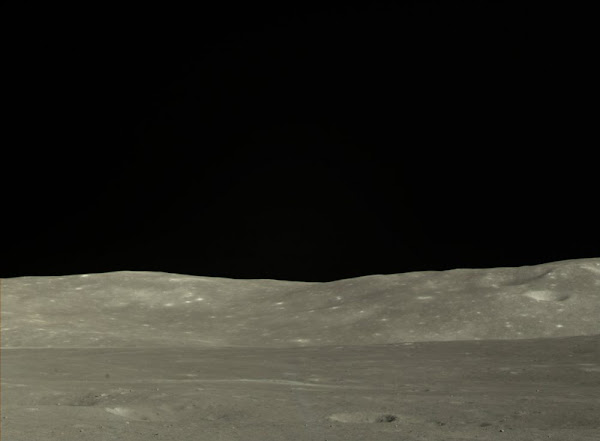China’s Chang’e 4 mission successfully landed on the far side of the moon, becoming the first spacecraft in the history of mankind to do so.
The first image of the moon’s far side snapped by China’s Chang’e 4 probe, which touched down on the far side of the moon on Jan. 2, 2019 (Jan. 3 Beijing time). Image Credit: CNSA.
Chang’e 4 touched down on the lunar surface at down at 10.26 am local time (2.26am GMT), according to state media. Soon after landing on the far side, it beamed back the first ever image of the unexplored region of the moon.
Then, the Change’4 lander released its rover, Yutu-2 which has been tasked to explore a region of the moon that never ever been explored by a manned rover.
One of the main mission objectives of the Chang’e 4 mission is to explore the famous Von Karman crater, located in the Aitken basin, which is the largest impact crater in our solar system.
China’s Yutu-2 Rover has successfully rolled out onto the lunar surface. Image Credit: CNSA.
The Aitken Basin is eight miles deep and has around 1,600 miles in diameter.
The Chinese mission will also perform mineral and radiation tests and will offer an unprecedented opportunity for scientists to examine minerals located on the far side of the moon.
The mission is set to use soil tests and temperature measurements to reveal new details about the moon, and the cataclysmic collision that created Earth’s natural satellite.
An image taken by Chang’e 4, showing one lander leg slightly depressed into the lunar soil. SNA / CLEP.
It will also attempt and uncover the origin of water unexpectedly abundant in lunar soil.
The Chang’e 4 lander also carries a miniature greenhouse experiment. It will test how plants, specifically potatoes, as well as flowering Arabidopsis plants, related to cabbage, grow on the moon. The lander also holds silkworm eggs.
A photograph taken by the Chinese Chang’e 4 mission on the far side of the Moon. Image Credit: CNSA.
The mission is of great importance.
Since the moon is tidally locked to Earth, as the moon rotates, we from Earth only see one side of the moon, with the far-side remaining unobservable.
In the past, lunar missions have ‘seen’ the far side of the moon, however, never has a mission attempted to land on the far side.
That’s of course until China decided to do it first, and launched the Chang’e-4 probe on December 7, 2018, using a Long March-3B rocket.





